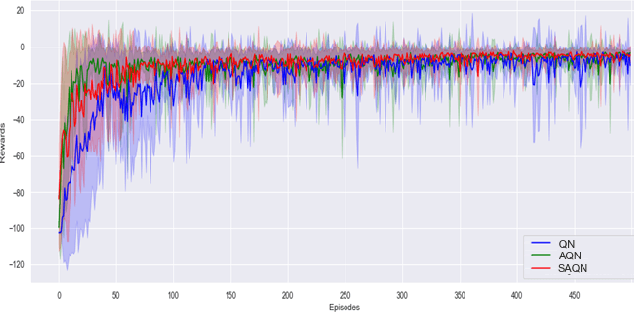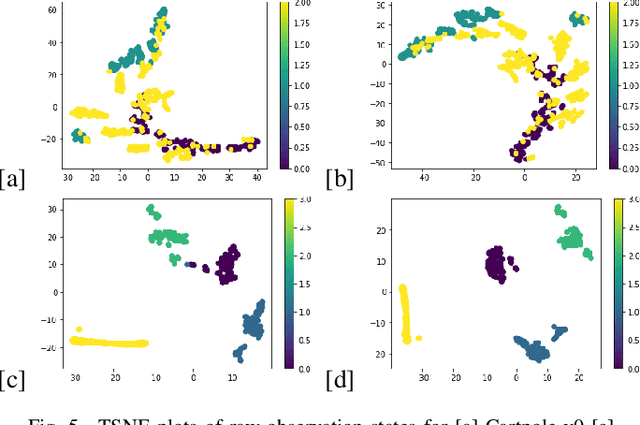Ji Wei Yoon
XMOL: Explainable Multi-property Optimization of Molecules
Sep 12, 2024Abstract:Molecular optimization is a key challenge in drug discovery and material science domain, involving the design of molecules with desired properties. Existing methods focus predominantly on single-property optimization, necessitating repetitive runs to target multiple properties, which is inefficient and computationally expensive. Moreover, these methods often lack transparency, making it difficult for researchers to understand and control the optimization process. To address these issues, we propose a novel framework, Explainable Multi-property Optimization of Molecules (XMOL), to optimize multiple molecular properties simultaneously while incorporating explainability. Our approach builds on state-of-the-art geometric diffusion models, extending them to multi-property optimization through the introduction of spectral normalization and enhanced molecular constraints for stabilized training. Additionally, we integrate interpretive and explainable techniques throughout the optimization process. We evaluated XMOL on the real-world molecular datasets i.e., QM9, demonstrating its effectiveness in both single property and multiple properties optimization while offering interpretable results, paving the way for more efficient and reliable molecular design.
Self-evolving Autoencoder Embedded Q-Network
Feb 18, 2024



Abstract:In the realm of sequential decision-making tasks, the exploration capability of a reinforcement learning (RL) agent is paramount for achieving high rewards through interactions with the environment. To enhance this crucial ability, we propose SAQN, a novel approach wherein a self-evolving autoencoder (SA) is embedded with a Q-Network (QN). In SAQN, the self-evolving autoencoder architecture adapts and evolves as the agent explores the environment. This evolution enables the autoencoder to capture a diverse range of raw observations and represent them effectively in its latent space. By leveraging the disentangled states extracted from the encoder generated latent space, the QN is trained to determine optimal actions that improve rewards. During the evolution of the autoencoder architecture, a bias-variance regulatory strategy is employed to elicit the optimal response from the RL agent. This strategy involves two key components: (i) fostering the growth of nodes to retain previously acquired knowledge, ensuring a rich representation of the environment, and (ii) pruning the least contributing nodes to maintain a more manageable and tractable latent space. Extensive experimental evaluations conducted on three distinct benchmark environments and a real-world molecular environment demonstrate that the proposed SAQN significantly outperforms state-of-the-art counterparts. The results highlight the effectiveness of the self-evolving autoencoder and its collaboration with the Q-Network in tackling sequential decision-making tasks.
Explainable machine learning to enable high-throughput electrical conductivity optimization of doped conjugated polymers
Aug 08, 2023Abstract:The combination of high-throughput experimentation techniques and machine learning (ML) has recently ushered in a new era of accelerated material discovery, enabling the identification of materials with cutting-edge properties. However, the measurement of certain physical quantities remains challenging to automate. Specifically, meticulous process control, experimentation and laborious measurements are required to achieve optimal electrical conductivity in doped polymer materials. We propose a ML approach, which relies on readily measured absorbance spectra, to accelerate the workflow associated with measuring electrical conductivity. The first ML model (classification model), accurately classifies samples with a conductivity >~25 to 100 S/cm, achieving a maximum of 100% accuracy rate. For the subset of highly conductive samples, we employed a second ML model (regression model), to predict their conductivities, yielding an impressive test R2 value of 0.984. To validate the approach, we showed that the models, neither trained on the samples with the two highest conductivities of 498 and 506 S/cm, were able to, in an extrapolative manner, correctly classify and predict them at satisfactory levels of errors. The proposed ML workflow results in an improvement in the efficiency of the conductivity measurements by 89% of the maximum achievable using our experimental techniques. Furthermore, our approach addressed the common challenge of the lack of explainability in ML models by exploiting bespoke mathematical properties of the descriptors and ML model, allowing us to gain corroborated insights into the spectral influences on conductivity. Through this study, we offer an accelerated pathway for optimizing the properties of doped polymer materials while showcasing the valuable insights that can be derived from purposeful utilization of ML in experimental science.
 Add to Chrome
Add to Chrome Add to Firefox
Add to Firefox Add to Edge
Add to Edge